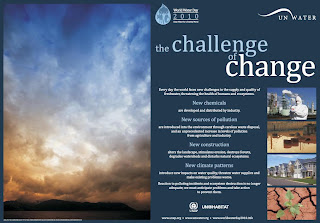What is Greenwashing?
Everyone’s heard the expression “whitewashing” — it’s defined as “a coordinated attempt to hide unpleasant facts, especially in a political context.”
“Greenwashing” is the same premise, but in an environmental context.
It’s greenwashing when a company or organization spends more time and money claiming to be “green” through advertising and marketing than actually implementing business practices that minimize environmental impact. It’s whitewashing, but with a green brush.
Example please...
A classic example might be an energy company that runs an advertising campaign touting a “green” technology they’re working on — but that “green” technology represents only a sliver of the company’s otherwise not-so-green business, or may be marketed on the heels of an oil spill or plant explosion.
Or a hotel chain that calls itself “green” because it allows guests to choose to sleep on the same sheets and reuse towels, but actually does very little to save water and energy where it counts — on its grounds, with its appliances and lighting, in its kitchens and with its vehicle fleet.
Or a bank that’s suddenly “green” because you can conduct your finances online, or a grocery store that’s “green” because they’ll take back your plastic grocery bags, or …
Why is Greenwashing a Problem?
Seems like anything and everything has “gone green” these days. Airlines, car companies, retailers, restaurants — heck, even networks and stadiums. Thankfully, more often than not, that’s a good thing. It‘s only bad if it’s greenwashing — that’s bad for the environment, consumers and, ultimately, for the very businesses doing the greenwashing — whether they mean to or not.
* Environment: At its very worst, greenwashing is bad for the environment because it can encourage consumers en masse to do the opposite of what’s good for the environment. At its most benign, greenwashing makes claims that are neither good nor bad for the environment — it’s just making green claims to sell more stuff.
* Consumers: We’ve all heard of lemon laws and bait-and-switch. Nobody likes to be taken advantage of, especially when it comes to money. So, the next time you see an environmental claim, ask yourself about “The Truth, The Whole Truth, And Nothing But The Truth” before you buy. The last thing you want to do is spend money on a product or service you believe is doing right by the environment, but in reality is not — or not as much as the ad might lead you to believe.
* Businesses:Smart businesses are finding out that doing right by the environment actually does increase profitability in many cases. With so many easy ways for businesses to reduce their environmental impact or improve their products and processes, it’s just sad when they don’t. It’s even worse when they don’t make changes and claim to be a green company just to push their agenda. When properly trained, consumers see right through this “green screen.” Then greenwashing backfires, hurting the company’s reputation and, ultimately, their sales.
How Do I Spot It?
There are plenty of good companies telling their environmental stories to the world, and even some who aren’t but should be. Some do it well, others don’t know where to begin. So what is considered good green marketing?
Here are a few tips on what to look for so you don’t get greenwashed, or if you’re a company, so you’re not greenwashing yourselves:
1. Truth: If you see a green ad, take a look at the company as a whole. Can you easily find more information about their sustainable business practices on their Web site? Do they have a comprehensive environmental story? Is there believable information to substantiate the green claims you saw in the ad? If not, buyer beware.
2. The Whole Truth: Next, try this. Google the company name plus the word “environment” and see what pops up. This is far from scientific, but if consumers or environmental advocates have a beef with the company's track record, something’s bound to pop up.
3. And Nothing But The Truth: “I know it when I see it.” Those are the words of Supreme Court Justice Warren Potter in a ruling on hard-core pornography in 1964. As weird as it may seem, those are words to live by for the consumer and green marketing claims. If you spot a green ad, how does it strike your gut? Does it ring true and authentic, or is it obviously hype? Smart shoppers abound globally, and your own scrutiny of green marketing claims is one more item to throw into your shopping cart.
What can we do for it?
1. Keep supporting greener products. As consumers, we have enormous power to shape the marketplace. The worst result of greenwashing would be to give up.
2. Look for, and choose, products with reliable eco-labels. (www.ecologo.org)
3. In the absence of a reliable eco-label, choose the product that offers transparency, information and education.
Once we all keep following this, we can ensure that
> Only Genuinely ‘greener’ products excel
> Competitive pressure from illegitimate green claims is diminished
> Marketers employ environmental concerns to establish honest, trustworthy, and long-lasting dialogue with their customers.
And all these can be done only through public awareness. So, spread this message to your family, friends, colleagues, neighbours and everyone you come across.
Lets start our journey towards a truely Green Environment.References:
www.terrachoice.com , www.greenwashingindex.com , en.wikipedia.org/wiki/Greenwash

















